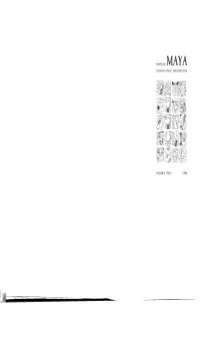دانلود کتاب Corpus of Maya Hieroglyphic Inscriptions 8.1 (Coba)
by Ian Graham, Eric von Euw|
|
عنوان فارسی: جبهه مقدس هیرئو گلیفیک مایا 8.1 (کوبا) |
 دانلود کتاب
دانلود کتاب
 جزییات کتاب
جزییات کتاب
Until the early 19605 the only known approach to the ruins was from El Ceibal, once a monter/a, or lumber camp (and since then usually the site of a single dwelling), from whence a trail used to lead gently uphill for 4 km to Group A of the ruins. Then in 1961 a Peabody Museum reconnaissance party (Adams 1963) opened up the most direct feasible route to the ruins from a river landing. Now one can climb rather strenuously up a ravine that cuts into the escarpment, emerge near the southeast corner of the partial plan reproduced in this work, and follow the path to Group A.
At the beginning of the museum's Seibal Project, the old trail from El Ceibal was widened into some semblance of a roadway, up which all the provisions, water, and equipment were brought in by a four-wheel-drive pickup. Water is always scarce at Seibal, for the "little spring" that Maler mentions (1908, p. 11) has never been found, probably because it has ceased to flow. In 1966 FYDEP, the development agency responsible for Peten, opened a graded road from the town of Sayaxche, 14 km to the west, as far as the Project's camp, which had been built just south of Structure A-24. At the time of writing, this road from Sayaxche remains in good condition as far as the junction with a road leading south to Raxuja and thence to Coban, but the rest of the way to Seibal is often impassable for vehicles during the rainy season.









 این کتاب رو مطالعه کردید؟ نظر شما چیست؟
این کتاب رو مطالعه کردید؟ نظر شما چیست؟
